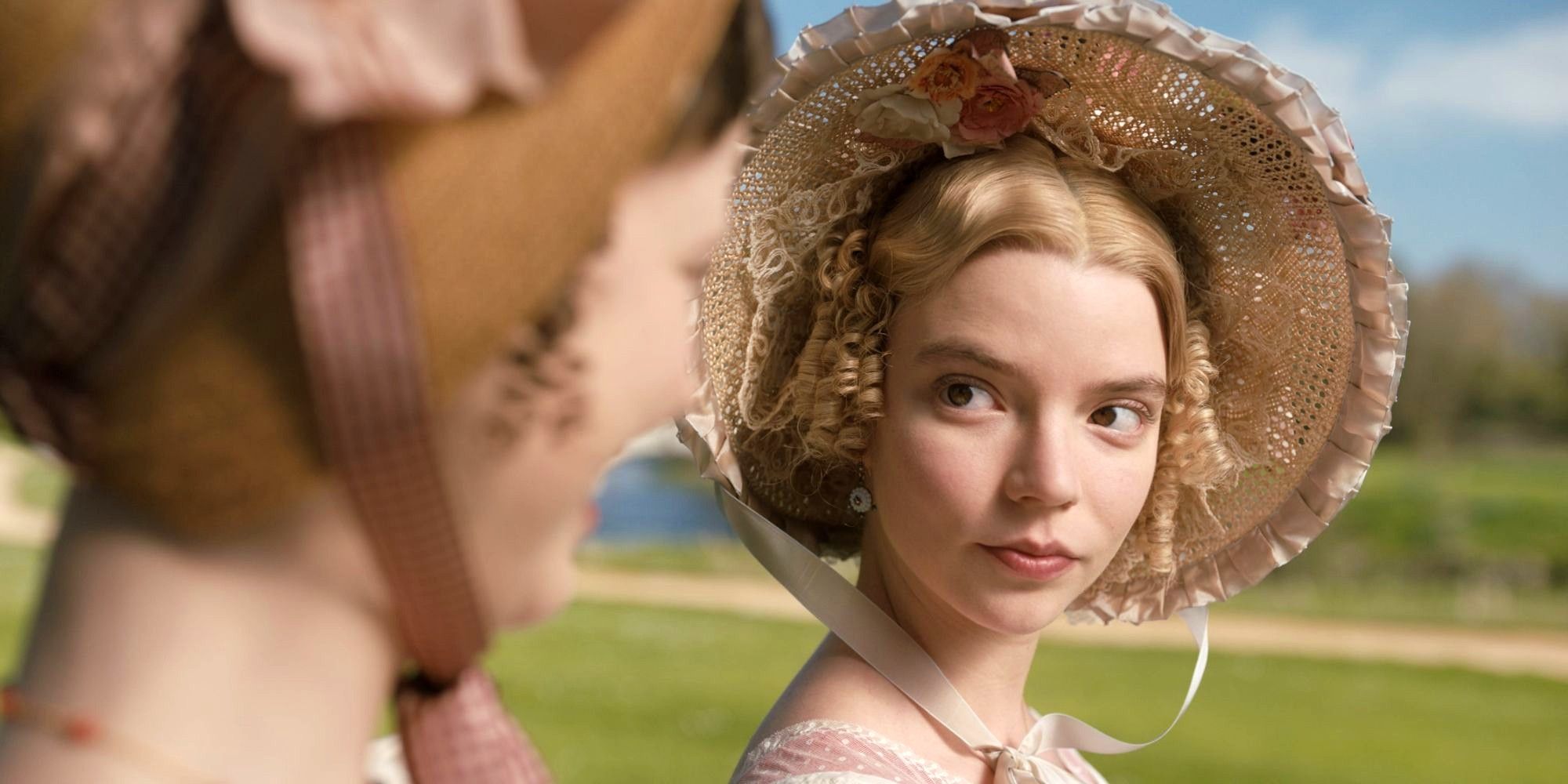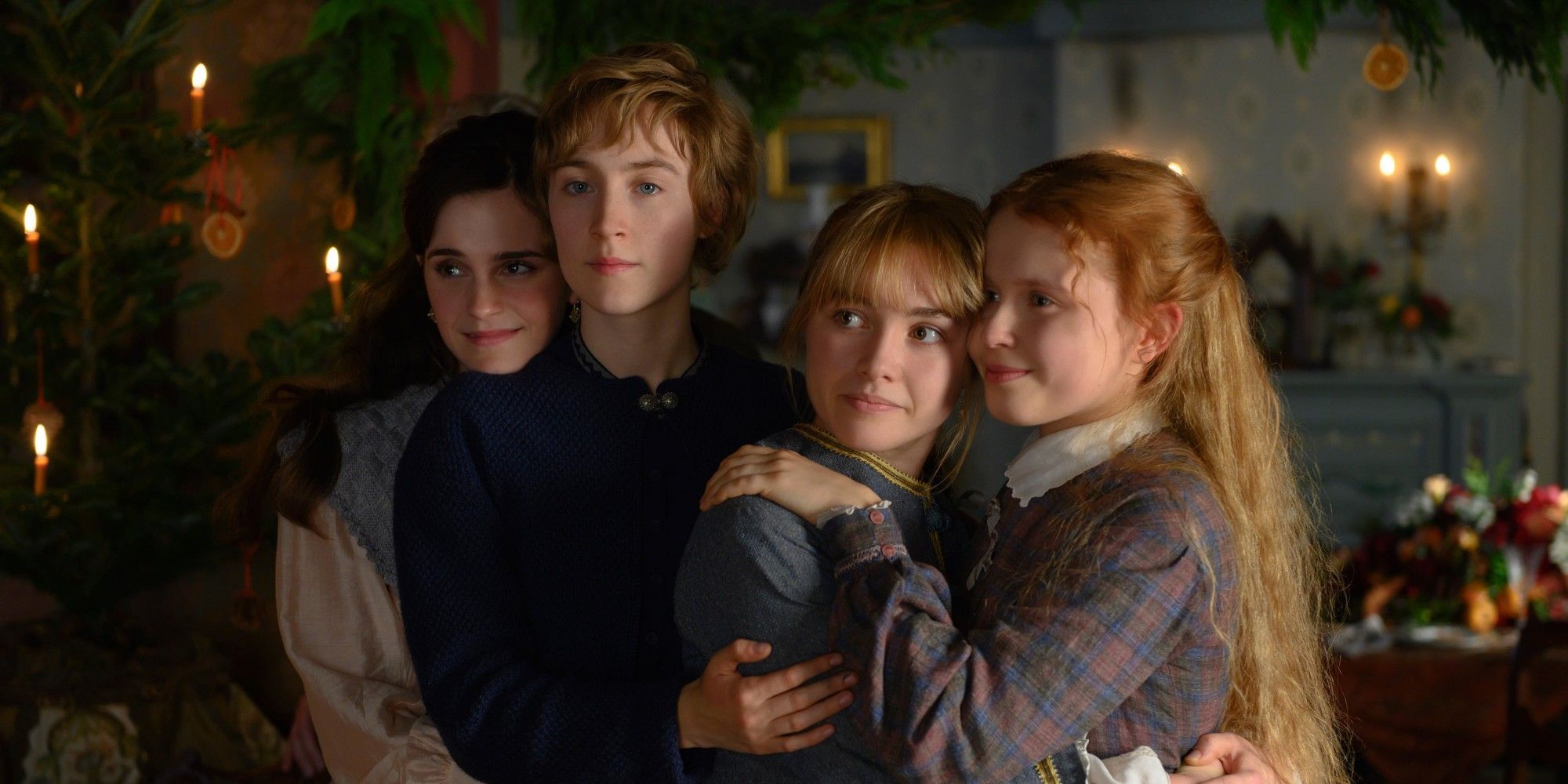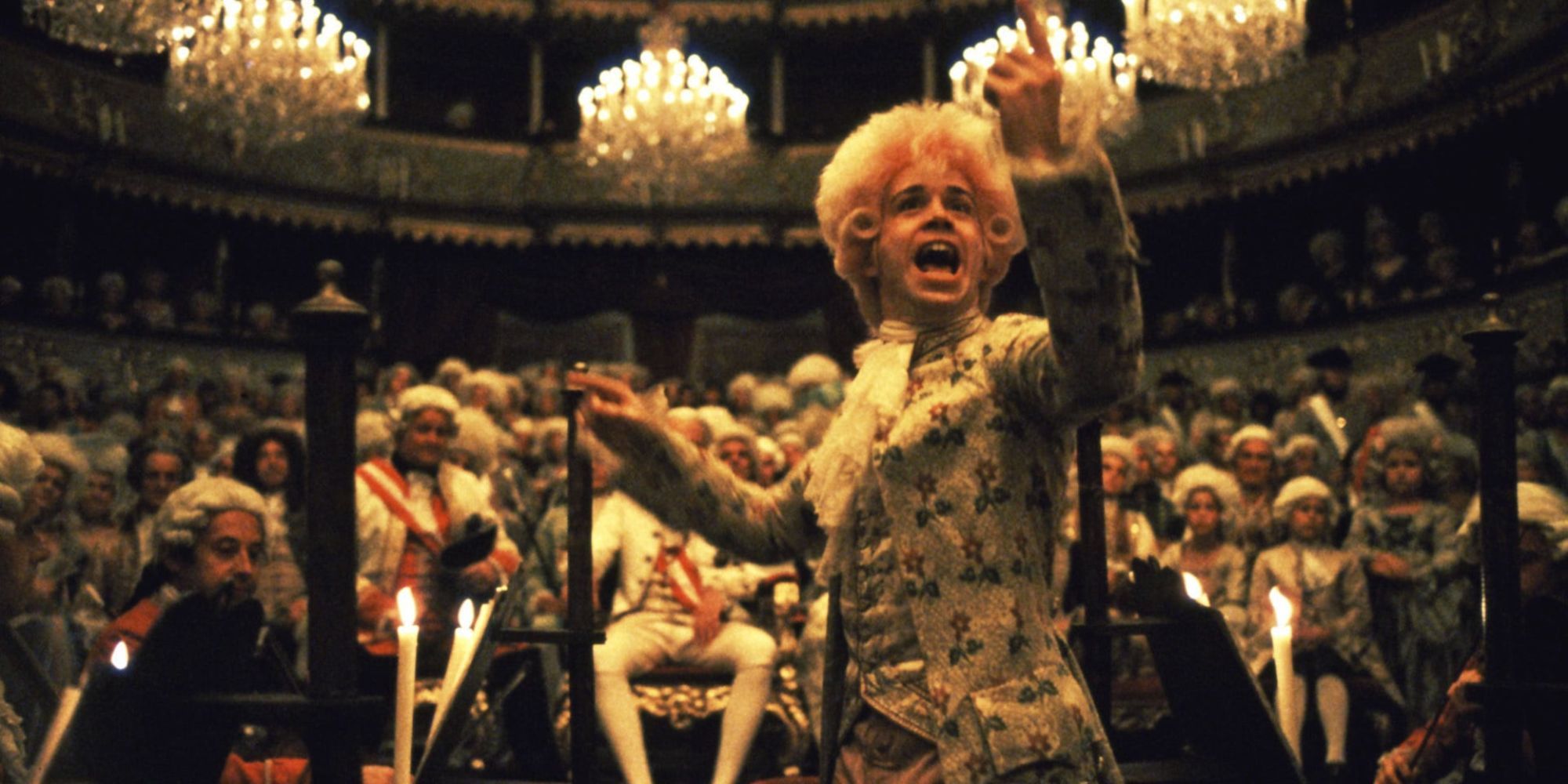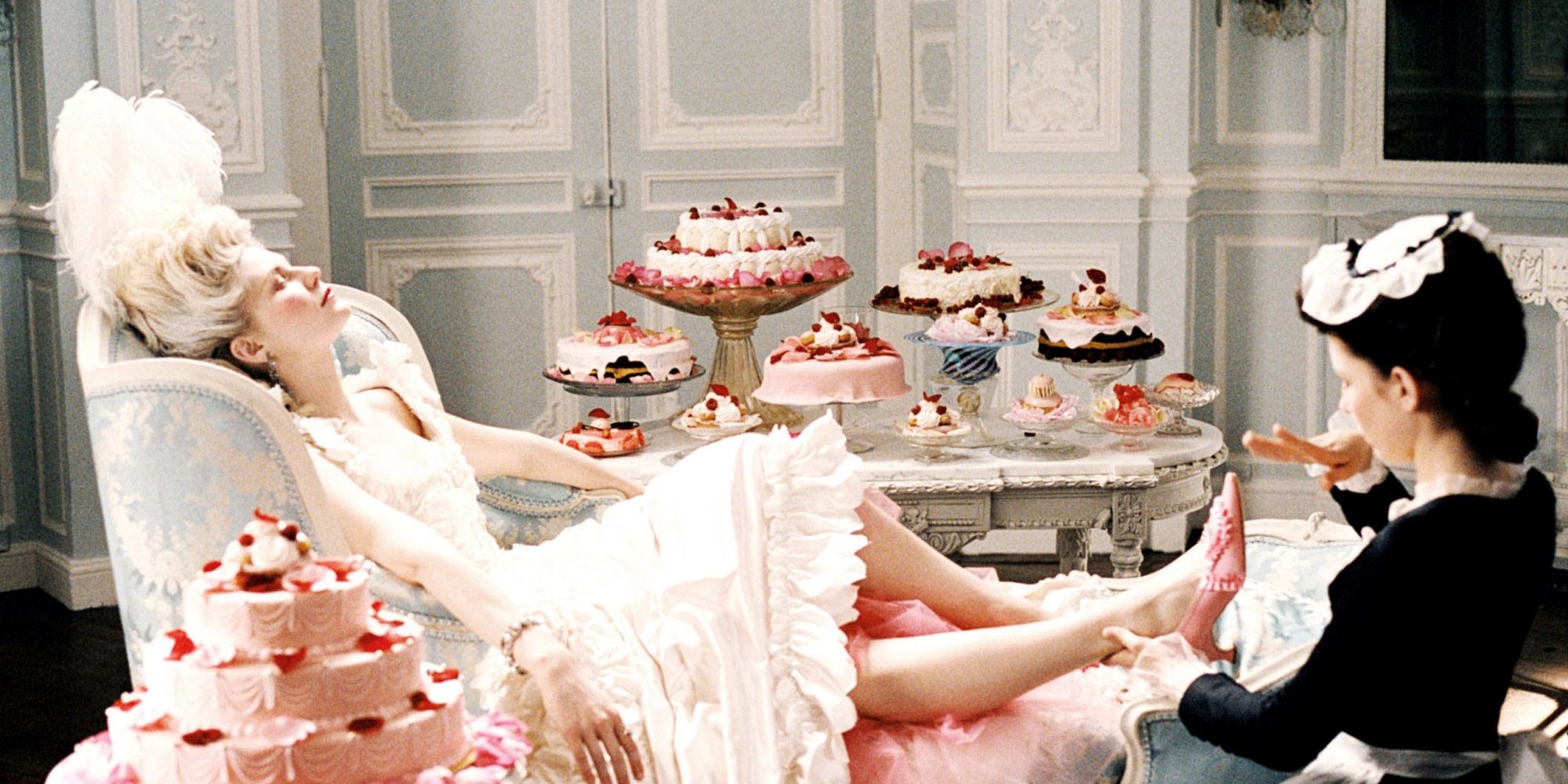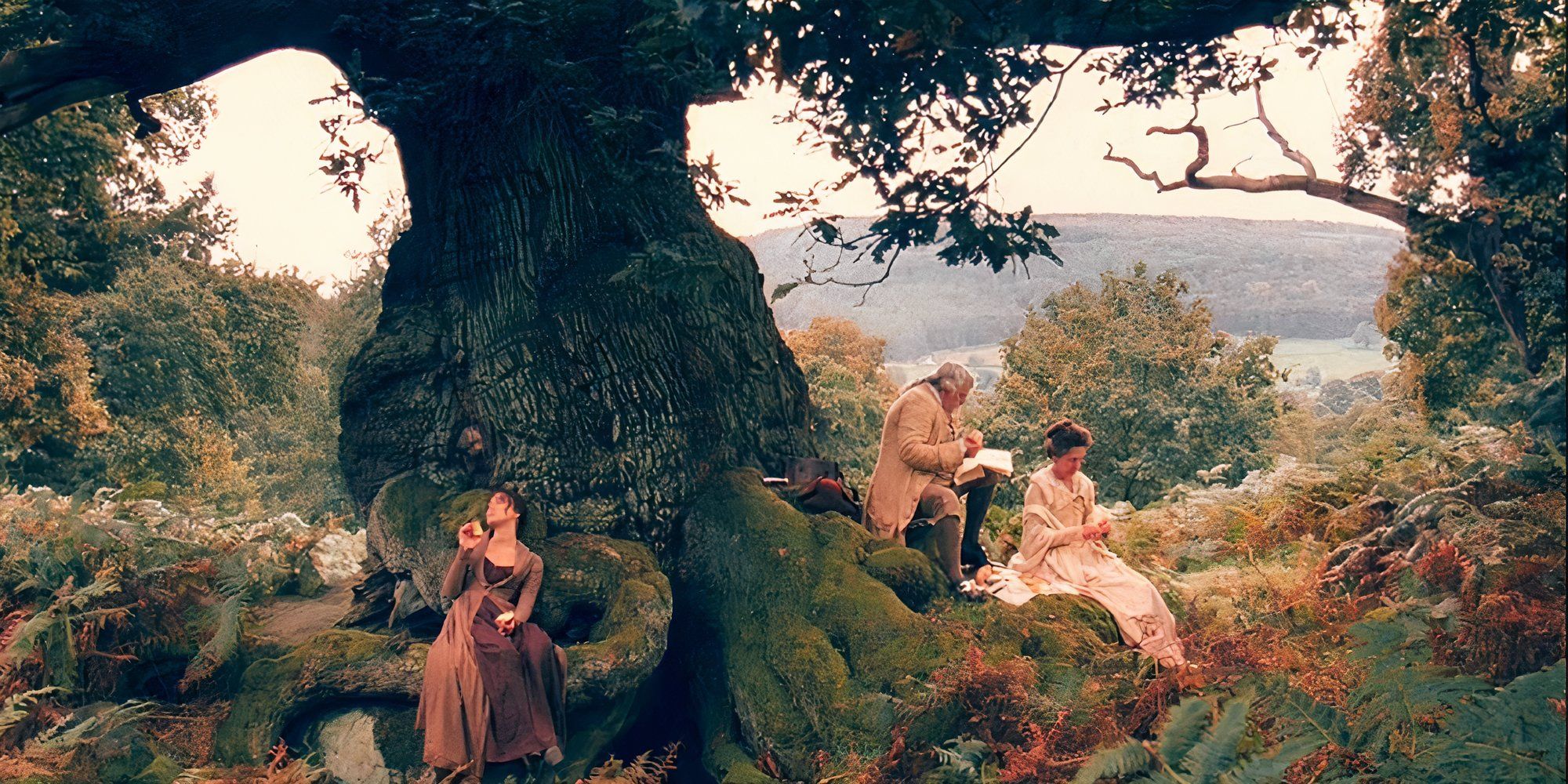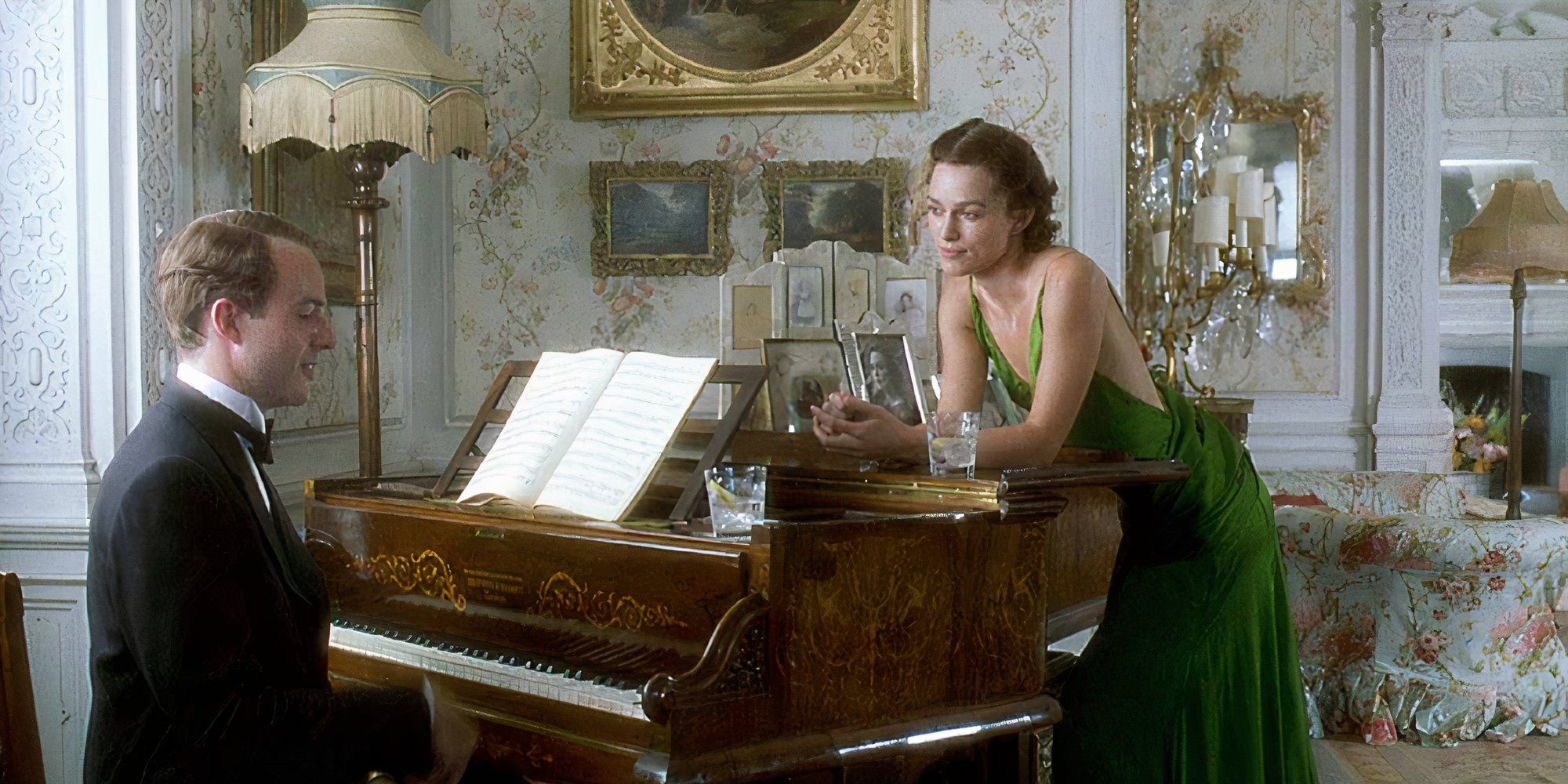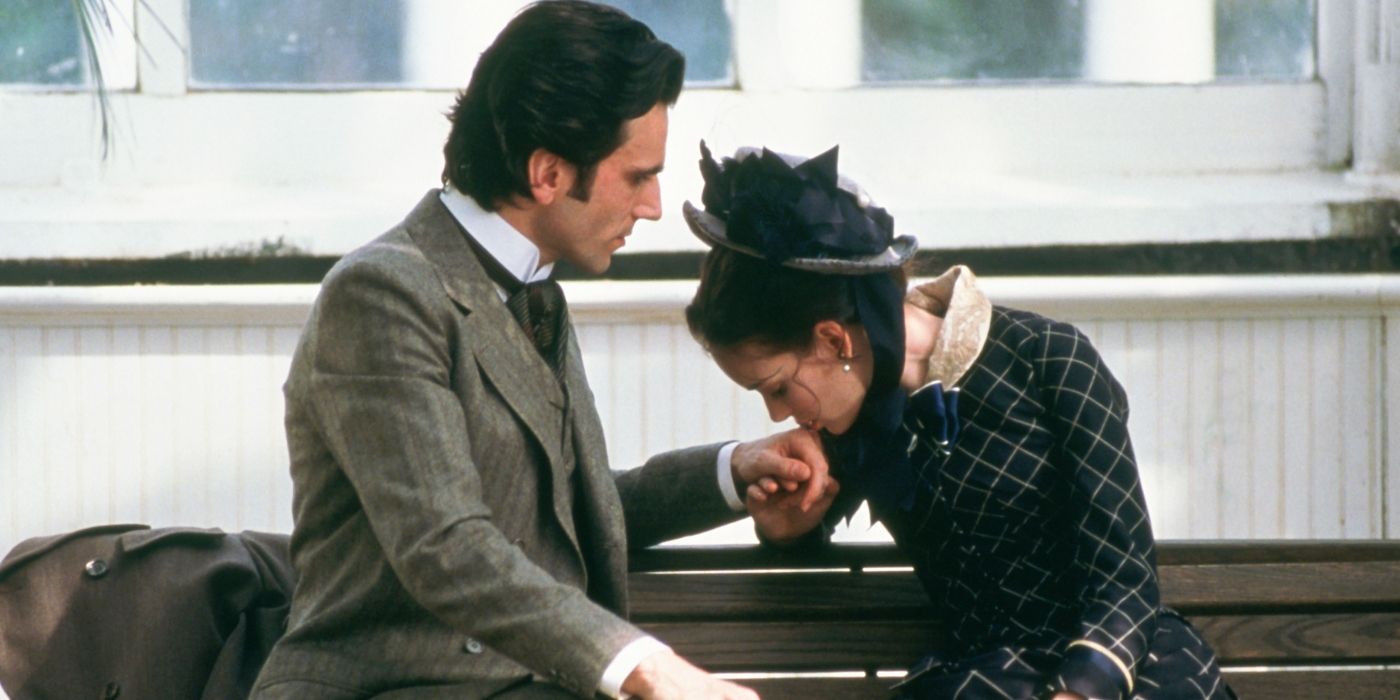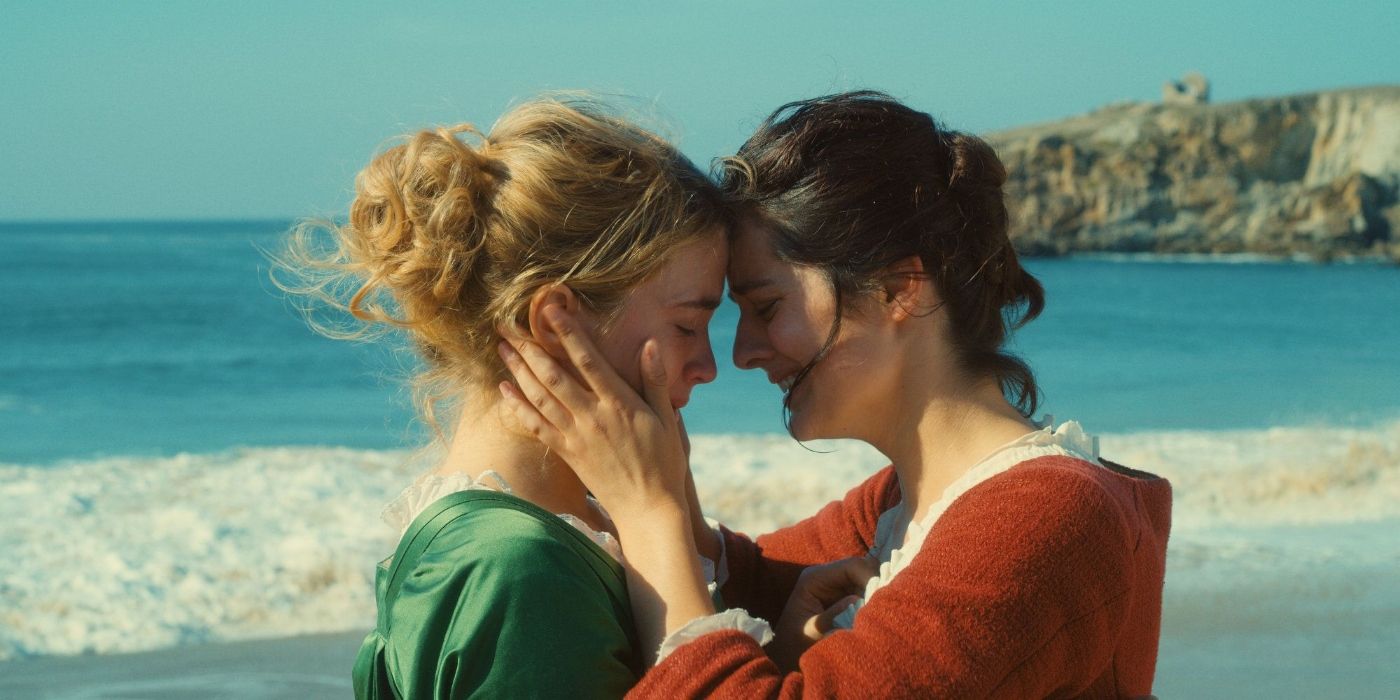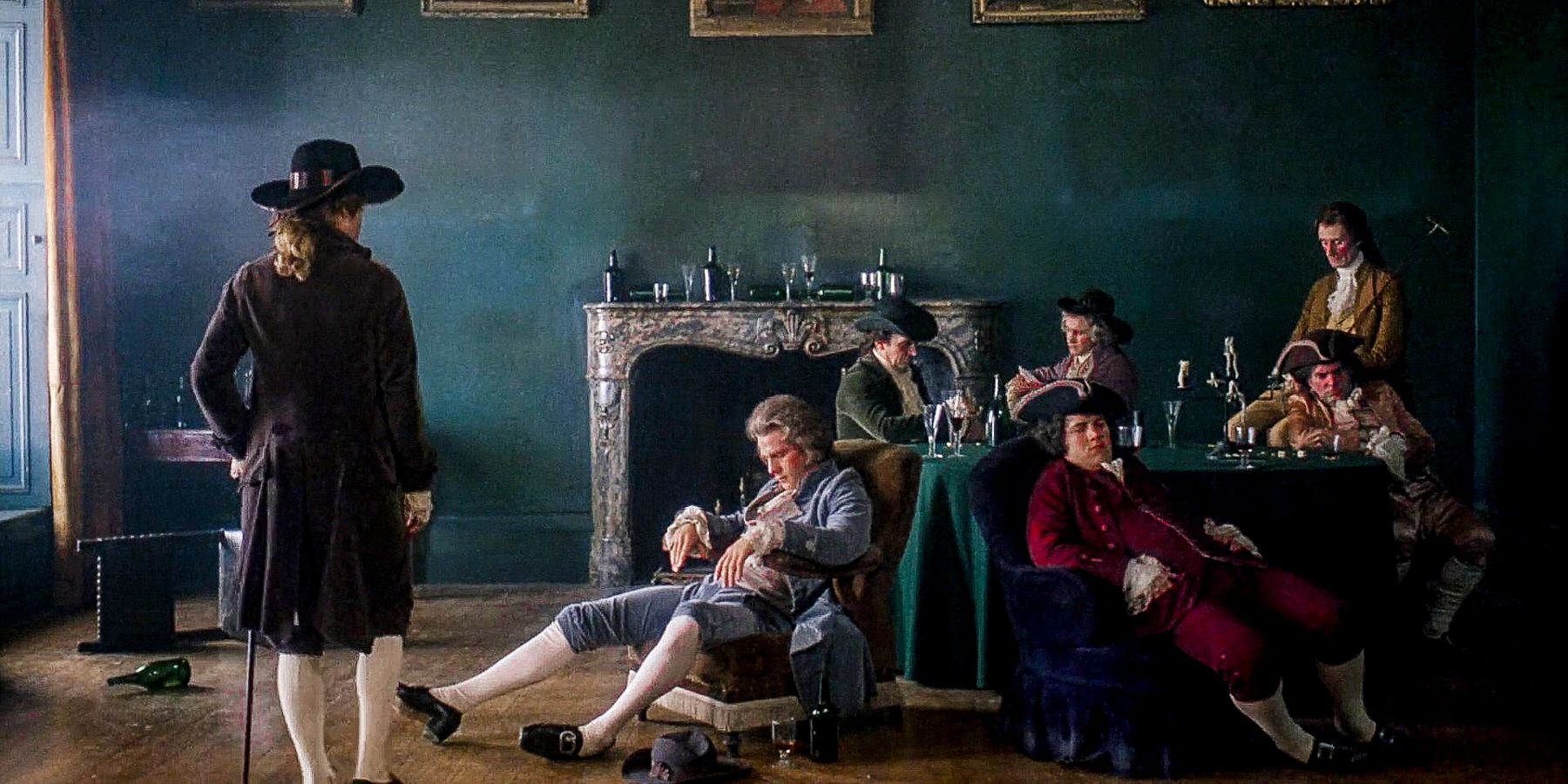Few genres captivate audiences and capture the imagination like the period film. With intricate costumes and sumptuous sets, the best of these movies fully transport audiences not just to another era but to entire worlds rich with meaning and artistry. That’s where cinematography, costuming, set design, and sound come together to create more than just accuracy: they create an utterly immersive atmosphere and mood.
But what is it that truly separates the great from the unforgettable? From candlelit duels and Regency ballrooms to windswept cliffs, we look back at some of the most visually stunning period movies. Each is a masterwork with a rich narrative, but the breathtaking visuals truly push them to new heights, establishing them as some of cinema’s most lush and unforgettable works.
10
‘Emma.’ (2020)
Equal parts witty and stylish, this adaptation of Jane Austen‘s beloved 1815 novel follows Anya Taylor-Joy‘s Emma Woodhouse, a confident, clever, and somewhat spoiled young woman living in early 19th-century England. A matchmaker, she meddles in the romantic lives of her friends and neighbors, especially Mia Goth‘s Harriet Smith. Things change when her attempts backfire, and she finds herself blind to her evolving feelings for longtime family friend George Knightley, brought to life by Johnny Flynn.
Emma. is colorful, fresh, modern, and timeless. With pastel-infused cinematography and meticulously composed, almost whimsical visuals that are a noteworthy part of its strong appeal, the film fascinates through and through. In addition to strong performances and eye candy, the film is a wonderful meditation on self-discovery, personal growth, class, social status, and friendship. It dazzles not only with its polished and artful photography and detailed costume design, but also with how it revitalizes a classic literary work with humor and style.
9
‘The Favourite’ (2018)
Before Poor Things, Yorgos Lanthimos had already refined the period drama with The Favourite, a sharp and irreverent take on royal court life equal parts opulent and absurd. Set in early 18th-century Great Britain, the film dramatizes the turbulent relationship between three women at the center of Queen Anne’s court. The queen (Olivia Colman), frail and emotionally volatile, turns to her closest confidante, Sarah (Rachel Weisz). But when new servant Abigail (Emma Stone) arrives with ambitions of her own, a ruthless power struggle begins.
The Favourite is a memorable film for many reasons, starting with its wickedly satirical tone and style that peppers its period drama with foul-mouthed insults, biting humor, and even contemporary attitudes. Still, it’s the absorbing visuals that are most striking: whether it’s the occasional fish-eye lenses, wide angles, and generally immersive effect, Yorgos Lanthimos knows how to draw audiences in and perfectly capture the chaos beneath the decorum.
8
‘Little Women’ (2019)
This reimagining of Louisa May Alcott‘s classic novel follows the four March sisters — wonderfully brought to life by Saoirse Ronan, Emma Watson, Florence Pugh, and Eliza Scanlen — as they come of age in New England during and after the American Civil War. With a non-linear narrative, it moves between two timelines: the sisters’ sunlit youth and their more somber adulthood, shaped by loss, ambition, and complicated romances.
Upon its release, Little Women was keenly appreciated for its take on womanhood and independence, with a strong focus on the sisters’ struggles with societal expectations versus personal dreams (and top-notch characterization). However, what arguably stands out the most is how rich their world feels, anchored by Yorick Le Saux‘s striking visuals, Oscar-winning costumes, detailed set designs, and its sweeping long takes grounded by Alexandre Desplat‘s gentle score. The world in Little Women feels as changing and kinetic as the sisters’ lives, adding a visually rich layer to an already thematically rich tale.
7
‘Amadeus’ (1984)
An ambitious, grand-scale epic that dramatizes the legendary rivalry between two composers in late 18th-century Vienna, Amadeus flashes back to recount Antonio Salieri‘s (F. Murray Abraham) fervent admiration for Wolfgang Amadeus Mozart‘s (Tom Hulce) genius — and how it curdled into envy when he discovered the true scope of his talent. Salieri, incensed that God chose to speak through such a vulgar conduit, embarks on a secret campaign to bring about Mozart’s downfall, all while masquerading as his supporter.
As expected, Amadeus doesn’t fall short on visual splendor, with unmatched use of music that allows it to guide the film’s rhythm, incredibly nuanced performances, and lavish locations in Prague. It is a bold and captivating film for plenty of reasons, including its blend of psychological and historical drama, and its meditation on art, genius, faith, God, and divine justice. Still, above all, the movie is a visual spectacle anchored by grandeur that vividly captures Mozart’s world.
6
‘Marie Antoinette’ (2006)
Directed by Sofia Coppola, Marie Antoinette sees Kirsten Dunst step into the shoes — or rather the Converse sneakers, as fans will recall a certain scene — of the infamous queen. The movie follows the ill-fated Austrian princess who becomes Queen of France, focusing on her teenage years and marriage to Louis XVI (Jason Schwartzman) as part of a political alliance. Although isolated and misunderstood in the decadent Versailles court, after years of struggle, she ascends to the throne. But her rise, as we know, can only lead to a tragic end.
Bridging history and modern sensibility, Marie Antoinette reframes the queen’s life as a universal story of youth, loneliness, and escapism. What truly makes it a delicious picture, though, isn’t merely the breathtaking lace, silk, and floral costumes; it’s the picturesque scenery that perfectly captures the opulence of court life. Add Coppola’s painterly wide shots and intimate framing, and the result is a film that earns its place on any list that discusses beauty. Not only did it redefine the genre by merging historical details with a contemporary touch, but it also offered unexpected empathy, portraying Marie Antoinette as equal parts a tragic historical figure and a misunderstood teen.
5
‘Pride & Prejudice’ (2005)
Pride & Prejudice has long been a comfort watch for many. And between all the angst and the way it evokes classical paintings, it’s easy to understand why. With Keira Knightley and Matthew MacFayden‘s anchoring performances, the movie introduces the timeless love tale between the proud and the prejudiced to a new generation. It closely follows Elizabeth Bennet, the independent and clever second daughter of the financially stressed Bennet family, as she encounters the wealthy and aloof Mr. Darcy at a ball. This sparks a chain of misunderstandings, prideful misjudgments, and, unsurprisingly, a whole lot of longing.
Famed for its painterly compositions and a seemingly fan-favorite “hand flex” scene that has awakened a handful of true yearners across the globe, Pride & Prejudice charms with its resonance and slow-burning approach. Naturally, the visuals, paired with Dario Marianelli‘s piano-driven score, elevate it to new heights. Whether through pastoral realism or Roman Osin‘s use of natural light, Joe Wright‘s film is a true visual delight.
4
‘Atonement’ (2007)
The kind of picture that is equal parts devastating and breathtaking, Joe Wright‘s Atonement, adapted from Ian McEwan‘s 2001 novel, draws audiences into an immersive, multi-decade story. It begins in 1935 England, triggered by a 13-year-old aspiring writer (played by Saoirse Ronan, at just 13, in an Academy Award-nominated performance, no less), who misinterprets a series of events that lead her to accuse her sister’s (Keira Knightley) lover (James McAvoy) of a crime he did not commit, naturally, with devastating consequences.
Atonement is about the cost of misunderstanding, false accusations, and the irreversible nature of some mistakes. Beyond its slow-burning romance and thought-provoking exploration of how misjudgment can unravel lives, it has swooned audiences with its cinematography — visual poetry, if we dare say, anchored by an exquisite color palette and memorable set pieces. It’s a heart-wrenching film that will make you reach for the tissues, sure. But also a feast for the eyes that blends a rich source material with cinematic innovation and elegant detail.
3
‘The Age of Innocence’ (1993)
From the mind of universally beloved filmmaker Martin Scorsese comes The Age of Innocence. Set in 1870s “Gilded Age” New York, it follows a well-bred lawyer (Daniel Day-Lewis), soon to be married to the sweet May Welland (Winona Ryder). However, his world is upended when he becomes deeply captivated by May’s cousin, Countess Olenska (Michelle Pfeiffer), who has recently returned from Europe after leaving her scandalous and abusive marriage.
For those intrigued by lavish portrayals of Gilded Age New York, Scorsese’s direction, paired with Michael Ballhaus‘ cinematography, Dante Ferretti‘s art direction, and Gabriella Pescucci‘s Oscar-winning costume design, is guaranteed to impress. The Age of Innocence is a sumptuous watch from beginning to end, standing out for its beauty, restraint, and even critique of social conformity. Beneath its beauty, though, lies a fascinating meditation on gender versus agency, innocence versus manipulation, and repression versus desire.
2
‘Portrait of a Lady on Fire’ (2019)
Very few period films have reached the level of sweeping and heart-shattering heights of Céline Sciamma‘s breathtaking Portrait of a Lady on Fire. This epic romance follows a talented painter (Noémie Merlant) secretly commissioned to paint the wedding portrait of an aristocratic woman (Adèle Haenel) who refuses to marry and won’t pose. Marianne acts as a companion, observing Héloïse by day and committing her likeness to canvas from memory at night. The facade quickly drops, though, and as Héloïse agrees to pose, a brief but life-altering love affair develops between the two women.
Portrait of a Lady on Fire stands out in the way it centers the so-called “female gaze,” depicting desire and intimacy with honesty, equality, and mutuality — never exploitative, always meaningful. Still, what makes it a memorable film, in part, is its undeniable beauty: exquisite sound design enhances its mood, while stunning color palettes and ethereal shots that could exist as classical paintings provide the visual splendor. It’s no surprise, then, that the film has become a landmark in queer cinema and period storytelling, celebrated for its boldness and artistry alike.
1
‘Barry Lyndon’ (1975)
To think of stunning period epics without Barry Lyndon popping into mind is nearly impossible. Recounting the rise and fall of Redmond Barry (Ryan O’Neal), a charming, naïve young Irishman in 18th-century Europe, the movie illustrates his fleeing to Ireland and eventually joining the British army. When he ingratiates himself with aristocratic gamblers and woos the wealthy Lady Lyndon (Marisa Berenson), Redmond assumes the name of “Barry Lyndon” and attempts to secure his claim.
Stanley Kubrick has set a benchmark for period drama with Barry Lyndon‘s striking authenticity. The film has, ever since its release, been hailed as one of the most historically accurate period films, and it’s no wonder. In Barry Lyndon, every costume was crafted from period fabrics. The sets breathe the authentic architecture, art, and décor of the 1700s. Even the lighting was carefully designed to mimic natural candlelight. So, for those who are looking to be transported into a long-gone world, down to the very threads and brushstrokes, Barry Lyndon is the portal to the past.


